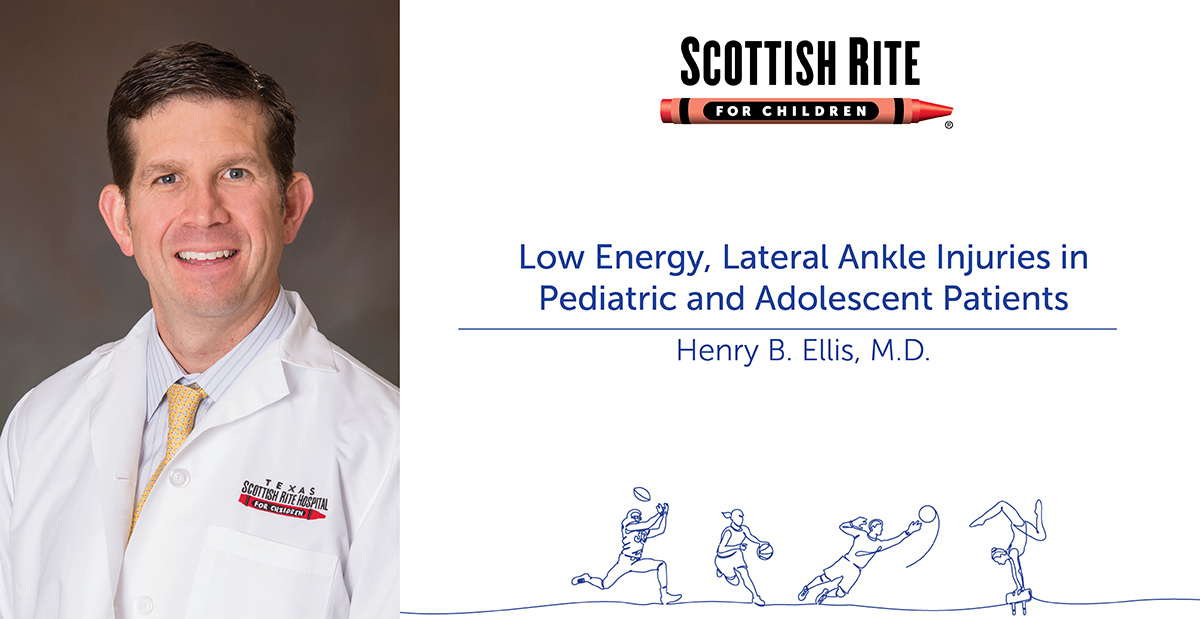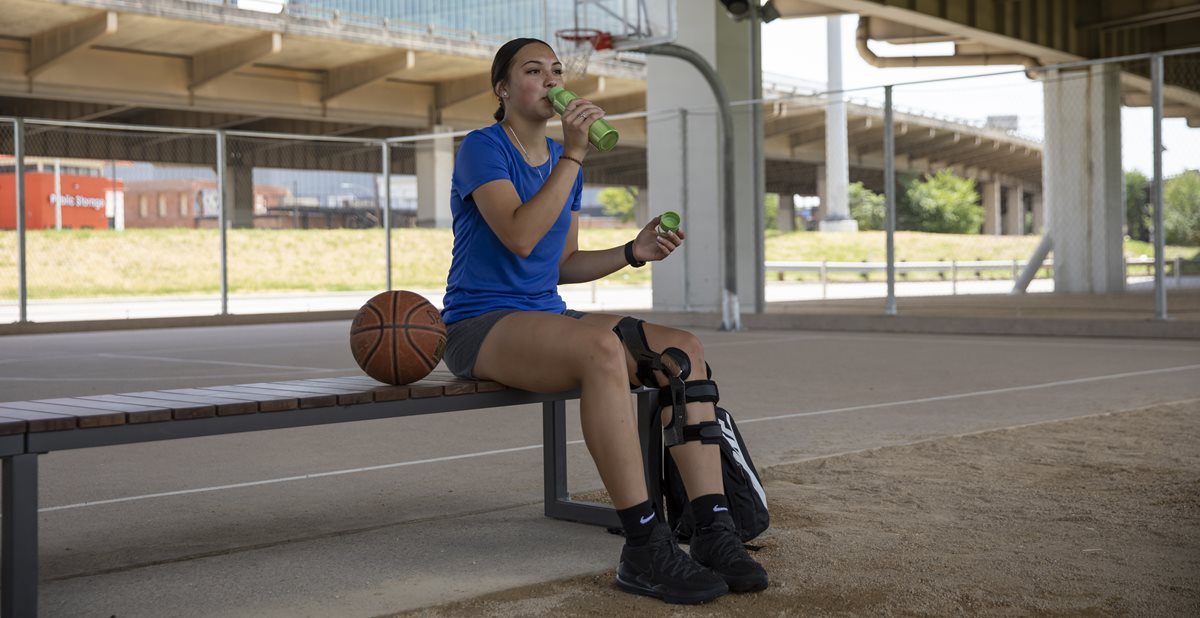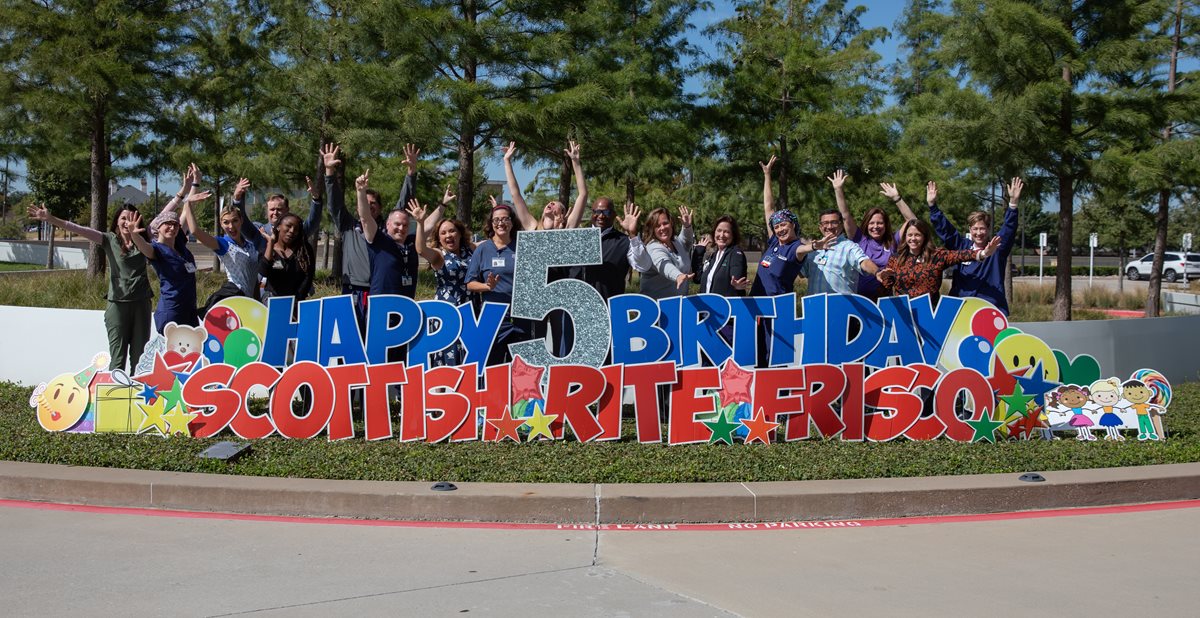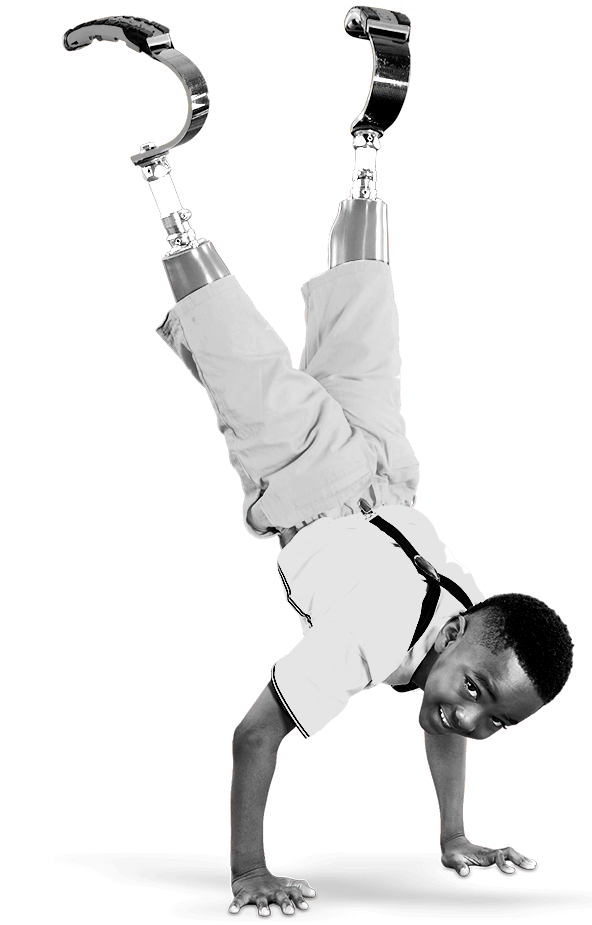
Jan 15, 2021 / Sports Medicine
Lateral Ankle Injuries in Kids
Rolling or twisting the ankle is a common injury described by children and teens. Depending on the time left for growing, different injuries should be considered. In older teens, growth is complete and therefore, the bones in the ankle are at less risk for injury and the softer ligaments are at a greater risk for injury. In younger athletes, the fibula (lower leg bone) still has an area of softer cells called cartilage. This area, until it is replaced with bone cells at the completion of growing, is at a greater risk for injury than the bone.
Therefore, younger athletes have a wider range of possible diagnoses with a similar injury to an older athlete. Henry B. Ellis, M.D., Scottish Rite for Children pediatric orthopedic surgeon contributed to a recent publication to describe the frequency of the different injuries and factors associated. We asked him to help us share the results of that systemic review of the literature.
Why did you do this review?
There aren’t many published articles that collect all the knowledge from studies in this younger population. By doing this, we have better information to reduce time out of sports, select the most appropriate immobilization device and inform injury prevention counseling and efforts.
What do you want the reader to learn from a review like this?
Knowing the consequences of taking an athlete out of sports, pediatric sports medicine specialists are constantly looking for evidence to validate common practices. Knowing what treatment leads to earlier return, knowing what interventions lower the risk of injury and knowing who is at greater risk of a worse injury all make us better at evaluating, planning treatment and counseling our patients to prevent future injuries.
What sports have the highest rate of injury in athletes under 19?
Volleyball, dance and basketball
What are risk factors for lateral ankle injury in kids?
Yes, evidence suggests balance training can help reduce the risk.
Do braces help prevent ankle injuries?
Studies do not show that braces reduce the risk of injury. However, for those who have had an ankle injury before, a rigid brace can help with a recurrent (repeat) injury.
The article Low Energy, Lateral Ankle Injuries in Pediatric and Adolescent Patients: A Systematic Review of Ankle Sprains and Nondisplaced Distal Fibula Fractures was published in the Journal of Pediatrics in July 2020. Henry B. Ellis, M.D., was on a team of contributing authors from around the country. Ellis participates in many multi-center projects where he works closely with other pediatric sports medicine experts to improve care for young athletes.
Beck JJ, VandenBerg C, Cruz AI, Ellis HB Jr. Low Energy, Lateral Ankle Injuries in Pediatric and Adolescent Patients: A Systematic Review of Ankle Sprains and Nondisplaced Distal Fibula Fractures. J Pediatr Orthop. 2020 Jul;40(6):283-287.
Therefore, younger athletes have a wider range of possible diagnoses with a similar injury to an older athlete. Henry B. Ellis, M.D., Scottish Rite for Children pediatric orthopedic surgeon contributed to a recent publication to describe the frequency of the different injuries and factors associated. We asked him to help us share the results of that systemic review of the literature.
Why did you do this review?
There aren’t many published articles that collect all the knowledge from studies in this younger population. By doing this, we have better information to reduce time out of sports, select the most appropriate immobilization device and inform injury prevention counseling and efforts.
What do you want the reader to learn from a review like this?
Knowing the consequences of taking an athlete out of sports, pediatric sports medicine specialists are constantly looking for evidence to validate common practices. Knowing what treatment leads to earlier return, knowing what interventions lower the risk of injury and knowing who is at greater risk of a worse injury all make us better at evaluating, planning treatment and counseling our patients to prevent future injuries.
What sports have the highest rate of injury in athletes under 19?
Volleyball, dance and basketball
What are risk factors for lateral ankle injury in kids?
- Overweight children with a body mass index at or above 85%.
- Males, in general, however, in sports females have a higher risk.
- History of a prior ankle injury.
- Poor balance.
Yes, evidence suggests balance training can help reduce the risk.
Do braces help prevent ankle injuries?
Studies do not show that braces reduce the risk of injury. However, for those who have had an ankle injury before, a rigid brace can help with a recurrent (repeat) injury.
The article Low Energy, Lateral Ankle Injuries in Pediatric and Adolescent Patients: A Systematic Review of Ankle Sprains and Nondisplaced Distal Fibula Fractures was published in the Journal of Pediatrics in July 2020. Henry B. Ellis, M.D., was on a team of contributing authors from around the country. Ellis participates in many multi-center projects where he works closely with other pediatric sports medicine experts to improve care for young athletes.
Beck JJ, VandenBerg C, Cruz AI, Ellis HB Jr. Low Energy, Lateral Ankle Injuries in Pediatric and Adolescent Patients: A Systematic Review of Ankle Sprains and Nondisplaced Distal Fibula Fractures. J Pediatr Orthop. 2020 Jul;40(6):283-287.



